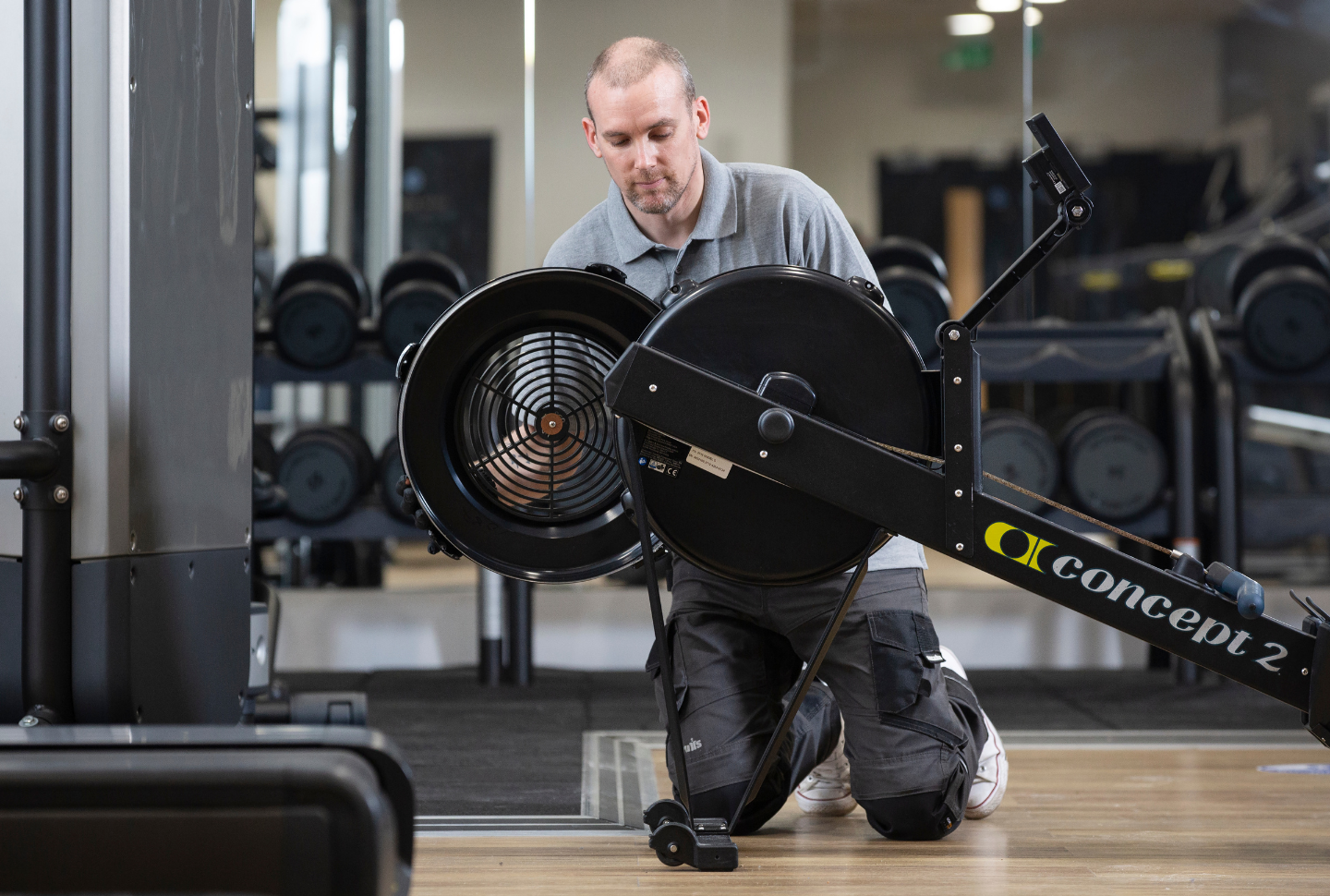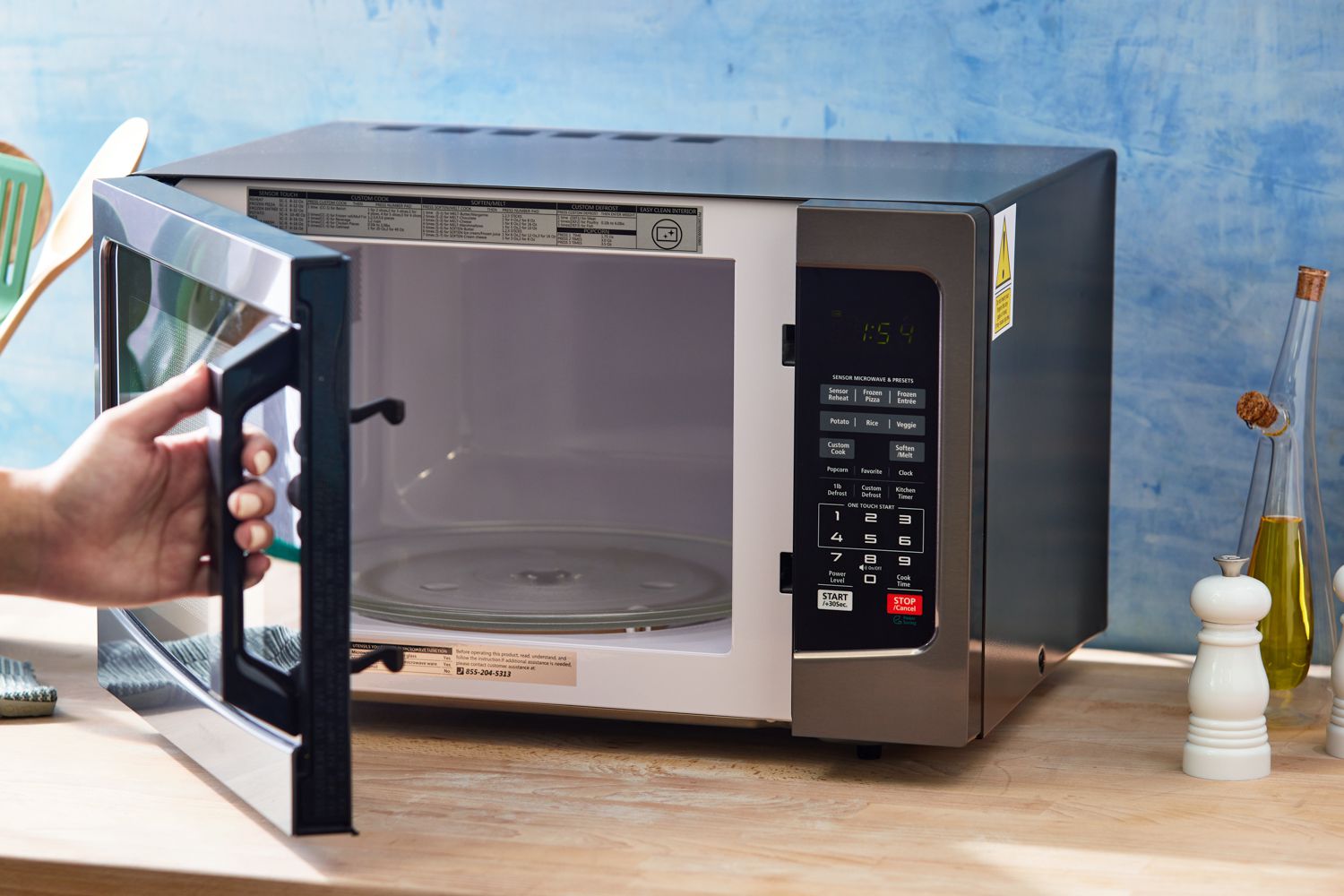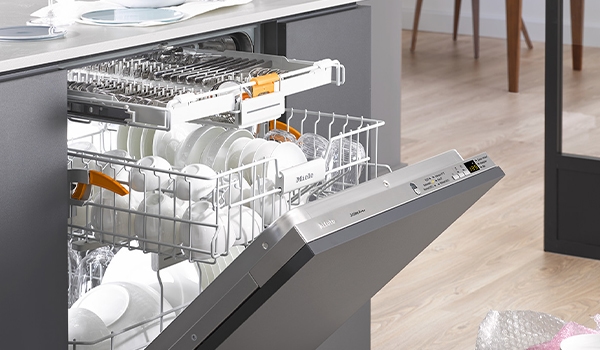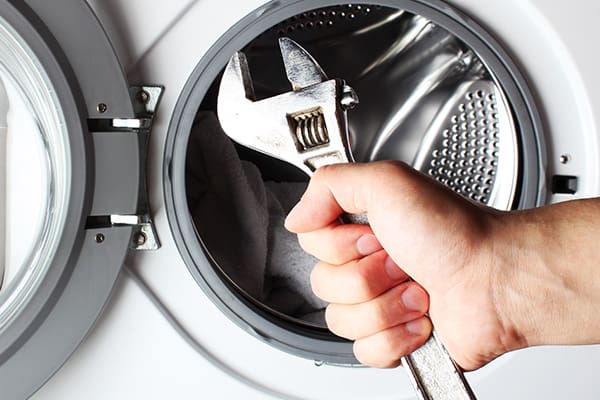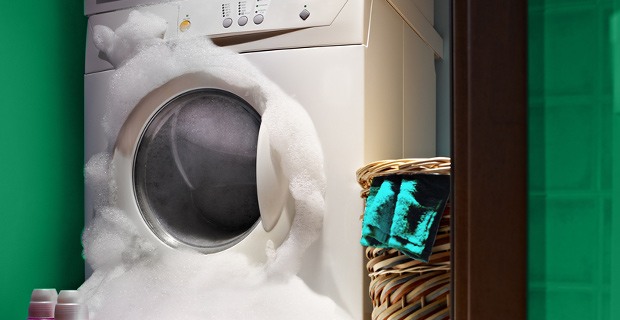Gym Maintenance & Repair Tips for Commercial Success
In today's dynamic commercial fitness landscape, where competition is fierce and customer expectations are high, the proper maintenance of gym equipment emerges as a cornerstone of success. Beyond mere functionality, gym owners recognize that the condition of their equipment directly impacts member satisfaction and safety. Thus, prioritizing regular upkeep and prompt repairs becomes imperative to sustain seamless operations and uphold a positive gym environment.
At the heart of this blog lies a comprehensive exploration of the intricate world of maintaining and repairing gym equipment, encompassing both routine maintenance practices and the protocols necessary for addressing issues arising from intense usage. By delving into these crucial aspects, we aim to equip gym owners and operators with the knowledge and strategies needed to optimize their equipment's performance and longevity.
In the following sections, we will navigate through the significance of regular maintenance routines, elucidate essential practices for preserving equipment integrity, and outline effective strategies for handling repairs post-heavy usage. Through actionable insights and practical advice, this blog aims to empower commercial gym stakeholders to proactively manage their equipment, ensuring a superior workout experience for members while safeguarding their investment in the competitive fitness market.
Importance of Regular Maintenance
Regular maintenance of gym equipment is not merely a routine task; it is a fundamental practice that directly impacts the longevity, safety, and performance of the equipment. In this section, we will delve into the importance of regular maintenance, highlighting its role in maximizing equipment lifespan, ensuring safety, and enhancing performance.
Maximizing Equipment Lifespan
One of the primary benefits of regular maintenance is its ability to prolong the lifespan of gym equipment. Fitness machines are subjected to constant stress and strain due to repetitive use, which can lead to wear and tear over time. By implementing a structured maintenance schedule that includes cleaning, lubrication, and inspection of components, gym owners can mitigate the effects of wear and tear, thus extending the operational life of their equipment. This not only helps in optimizing the return on investment but also reduces the frequency of costly repairs or replacements, ultimately saving valuable resources in the long run.
Ensuring Safety
Safety is paramount in any gym environment, and regular maintenance plays a crucial role in upholding safety standards. Through routine checks and inspections, gym owners can identify potential hazards or malfunctioning parts before they escalate into serious issues. For instance, loose bolts, worn-out cables, or malfunctioning electronic components pose significant safety risks to users. By promptly addressing these issues through maintenance protocols, gym owners can minimize the risk of accidents or injuries, thereby fostering a safe and secure workout environment for their members.
Enhancing Performance
In addition to prolonging equipment lifespan and ensuring safety, regular maintenance also enhances the overall performance of gym equipment. Well-maintained machines operate smoothly and efficiently, delivering a seamless workout experience to users. Properly calibrated equipment ensures accurate resistance levels, optimal movement patterns, and consistent performance, thereby enabling users to achieve their fitness goals effectively. Moreover, a well-maintained gym environment contributes to member satisfaction, as it reflects the commitment of the facility towards providing high-quality equipment and services. This, in turn, can lead to increased member retention and positive word-of-mouth referrals, bolstering the reputation and success of the gym in the competitive fitness industry.
In conclusion, regular maintenance of gym equipment is indispensable for maximizing equipment lifespan, ensuring safety, and enhancing performance. By implementing structured maintenance routines and protocols, gym owners can safeguard their investment, minimize safety risks, and deliver a superior workout experience to their members. As such, prioritizing regular maintenance is not only a prudent business practice but also a testament to the commitment of gym owners towards promoting health, safety, and excellence in fitness facilities.
Routine Maintenance Practices
Routine maintenance practices are the backbone of a successful gym equipment maintenance program. By implementing these practices consistently, gym owners can ensure the optimal functioning and longevity of their equipment. In this section, we will explore three essential routine maintenance practices: cleaning and lubrication, inspection of wear and tear, and calibration and adjustment.
Cleaning and Lubrication
Regular cleaning and lubrication are essential for preventing dirt buildup and ensuring smooth operation of gym equipment. Dust, sweat, and other debris can accumulate on surfaces and moving parts, leading to friction and wear over time. To mitigate this, gym owners should establish a cleaning schedule to remove dirt and grime from equipment surfaces using mild detergents and disinfectants. Additionally, lubricating mechanisms such as pivot points, bearings, and cables with appropriate lubricants helps reduce friction and prolong the lifespan of moving parts. By incorporating cleaning and lubrication into their maintenance routine, gym owners can preserve the integrity and performance of their equipment while promoting a hygienic workout environment for their members.
Inspection of Wear and Tear
Periodic inspection of cables, belts, grips, and other components is crucial for identifying signs of wear and tear that may compromise the safety and functionality of gym equipment. Frayed cables, worn-out belts, or damaged grips can pose serious safety risks to users if left unattended. Therefore, gym owners should conduct visual inspections of these components regularly and replace them as needed to prevent accidents and injuries. Additionally, keeping spare parts on hand for quick replacements can minimize downtime and ensure uninterrupted access to equipment for members. By staying vigilant and proactive in monitoring wear and tear, gym owners can maintain a safe and reliable workout environment for their members.
Calibration and Adjustment
Calibration and adjustment of equipment settings are essential for maintaining accuracy and optimizing performance. Over time, factors such as usage patterns, environmental conditions, and mechanical wear can affect the calibration of fitness machines, resulting in inaccurate resistance levels or uneven tension. To address this, gym owners should periodically calibrate equipment settings according to manufacturer guidelines and user feedback. This includes adjusting tension levels, resistance settings, and alignment to ensure consistent performance across all machines. By keeping equipment properly calibrated and adjusted, gym owners can provide users with a superior workout experience while minimizing the risk of injury or dissatisfaction.
In conclusion, routine maintenance practices such as cleaning and lubrication, inspection of wear and tear, and calibration and adjustment are essential for preserving the integrity, safety, and performance of gym equipment. By incorporating these practices into their maintenance routines, gym owners can uphold high standards of equipment maintenance, promote user safety and satisfaction, and extend the lifespan of their investments.
Post-Heavy Usage Repair Protocols
After intense usage, gym equipment may experience wear and tear, potentially leading to malfunctions or safety hazards. Implementing post-heavy usage repair protocols is crucial for promptly addressing any issues that arise and ensuring the continued safety and functionality of the equipment. In this section, we will outline three essential post-heavy usage repair protocols: identifying issues, seeking professional evaluation, and timely replacement of parts.
Identifying Issues
Promptly assessing gym equipment after heavy usage is paramount for detecting any signs of damage or malfunction. Gym owners and staff should be vigilant in observing equipment for unusual noises, irregular movements, or other indicators of potential issues. Additionally, users should be encouraged to report any abnormalities they notice during their workouts. By promptly identifying issues, gym owners can prevent minor problems from escalating into major safety hazards or equipment failures.
Professional Evaluation
For thorough inspections and diagnosis of complex issues, seeking assistance from qualified technicians or manufacturers is essential. While gym staff may be capable of addressing minor repairs or adjustments, more significant issues may require specialized expertise. Qualified technicians have the knowledge and experience to diagnose problems accurately and recommend appropriate solutions. Moreover, manufacturers may offer warranty services or technical support to assist with repairs or replacements. By engaging professionals for evaluation and repair, gym owners can ensure that issues are addressed effectively and that equipment is restored to optimal condition.
Timely Replacement of Parts
Replacing worn-out or damaged components with genuine spare parts is essential for maintaining proper functionality and safety. Over time, parts such as cables, belts, bearings, and electronic components may wear out or become damaged due to heavy usage. Timely replacement of these parts with high-quality, manufacturer-approved replacements is critical for preserving the integrity of the equipment and preventing accidents or injuries. Gym owners should keep an inventory of spare parts on hand to facilitate quick replacements when needed. Additionally, implementing a proactive parts replacement schedule based on usage patterns and manufacturer recommendations can help prevent unexpected equipment failures and downtime.
In conclusion, implementing post-heavy usage repair protocols is essential for ensuring the continued safety, functionality, and longevity of gym equipment. By promptly identifying issues, seeking professional evaluation, and timely replacing worn-out parts, gym owners can effectively address maintenance needs and provide users with a safe and reliable workout environment. Investing in proactive repair protocols demonstrates a commitment to equipment maintenance and user satisfaction, ultimately contributing to the success and reputation of the gym.
Utilizing Technology for Maintenance
In the rapidly evolving landscape of fitness facility management, leveraging technology for maintenance purposes has become increasingly essential for optimizing operations and enhancing member experiences. In this section, we will explore two innovative technological solutions for maintenance: maintenance tracking software and IoT-enabled equipment.
Maintenance Tracking Software
Implementing maintenance tracking software offers a centralized digital solution for managing maintenance schedules, equipment usage, and repair histories. This software enables gym owners and managers to create and schedule maintenance tasks, set reminders for routine inspections, and track the completion of maintenance activities in real-time. Additionally, maintenance tracking software allows for the documentation of equipment service histories, including details of repairs, replacements, and warranty information. By consolidating maintenance-related data into a single platform, gym operators can streamline maintenance operations, improve accountability, and ensure compliance with maintenance protocols and regulations. Moreover, the analysis of maintenance data over time can facilitate predictive maintenance strategies, allowing for proactive interventions to prevent equipment failures and downtime.
IoT-enabled Equipment
Investing in IoT-enabled equipment equipped with built-in sensors and connectivity capabilities offers a revolutionary approach to equipment maintenance. These sensors collect real-time data on equipment performance metrics such as usage frequency, workload, temperature, and vibration levels. By analyzing this data, gym operators can gain valuable insights into equipment health and identify potential issues before they escalate into major problems. Furthermore, IoT-enabled equipment can generate proactive maintenance alerts, notifying maintenance staff or technicians of impending issues or maintenance requirements. This proactive approach to maintenance not only minimizes downtime and repair costs but also maximizes equipment uptime and member satisfaction. Additionally, IoT-enabled equipment may offer remote monitoring and diagnostics capabilities, allowing for swift troubleshooting and resolution of issues without the need for onsite intervention.
In conclusion, harnessing technology for maintenance purposes presents significant opportunities for improving efficiency, effectiveness, and reliability in gym operations. By implementing maintenance tracking software and investing in IoT-enabled equipment, gym owners can streamline maintenance processes, optimize equipment performance, and deliver a seamless workout experience for their members. Embracing technological innovations not only enhances the management of maintenance activities but also positions gyms for success in an increasingly competitive fitness industry.
Conclusion
In conclusion, efficient maintenance and timely repairs serve as the cornerstone of a successful commercial gym operation. By prioritizing regular upkeep and promptly addressing post-heavy usage repairs, gym owners can uphold high standards of equipment performance, safety, and member satisfaction. Furthermore, embracing technological advancements presents an opportunity to enhance the efficiency of maintenance practices, ensuring seamless operations in the competitive fitness industry.
In today's booming fitness industry, commercial gym owners must recognize the importance of maintaining and repairing their equipment to ensure optimal performance and member satisfaction. By implementing the essential tips outlined in this blog and leveraging technological solutions such as maintenance tracking software and IoT-enabled equipment, gym operators can uphold high standards of safety and service. These efforts not only contribute to the success and reputation of their businesses but also foster long-term relationships with members, ultimately driving growth and profitability in the competitive fitness market. By prioritizing maintenance and repair, gym owners demonstrate their commitment to providing a superior workout experience, thereby positioning themselves for success in an ever-evolving industry landscape.


